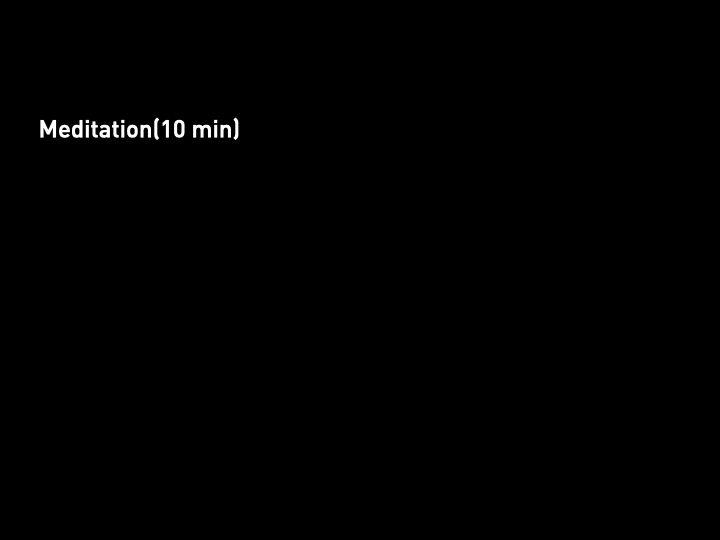
|
We will start first with a short 10 min guided meditation. So I can talk less, hehehehe # |
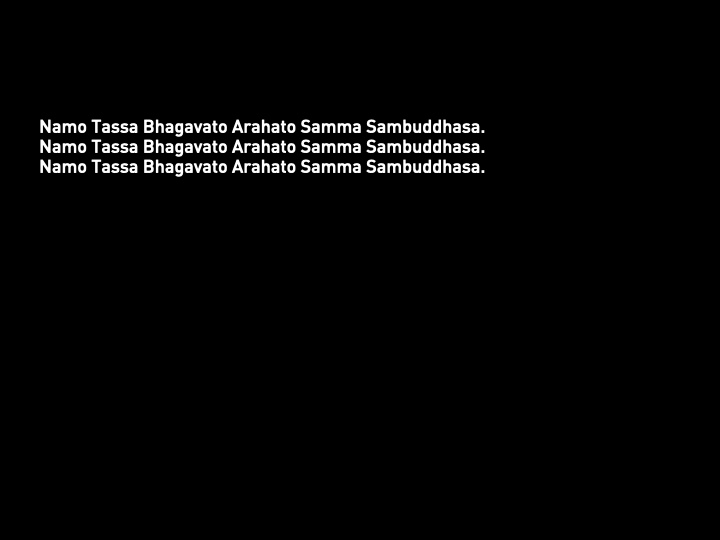
|
Namo Tassa Bhagavato Arahato Samma Sambuddhasa. Namo Tassa Bhagavato Arahato Samma Sambuddhasa. Namo Tassa Bhagavato Arahato Samma Sambuddhasa. # |
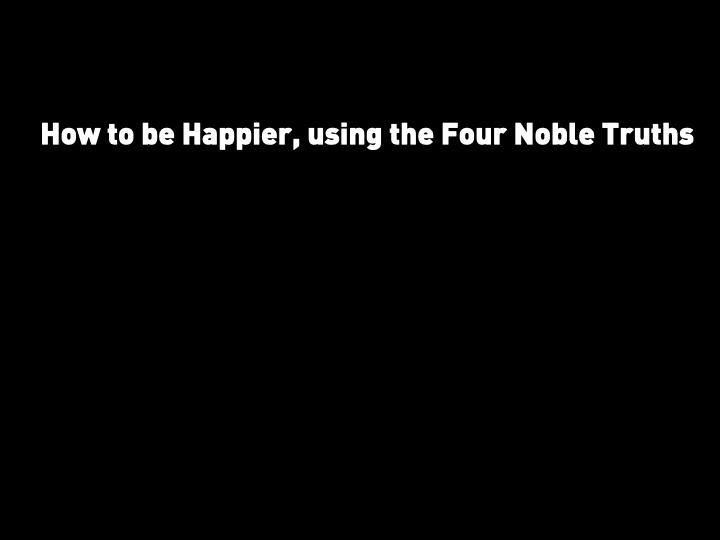
|
Welcome to today’s session. my name is PJ, and I am a mentor in the Buddhist Mentorship Programme. I have been practicing the Dhamma (frfr) for the past 15 years, since I attended an executive retreat with Ajahn Brahm in 2010. In 2022 I went on a 3 month meditation retreat with Ajahn Brahm at his monastery. In 2023 I visited Ajahn Ganha for the first time. I consider my main teachers to be Ajahn Brahm, Ajahn Ganha, Ajahn Brahmali and Venerable Analayo. I have studied the suttas for the past 10+ years or so… in the last Dhamma Inspiration session, Sis Bee Li said it wasn’t her job to overload you with suttas: that is MY job. :p # |
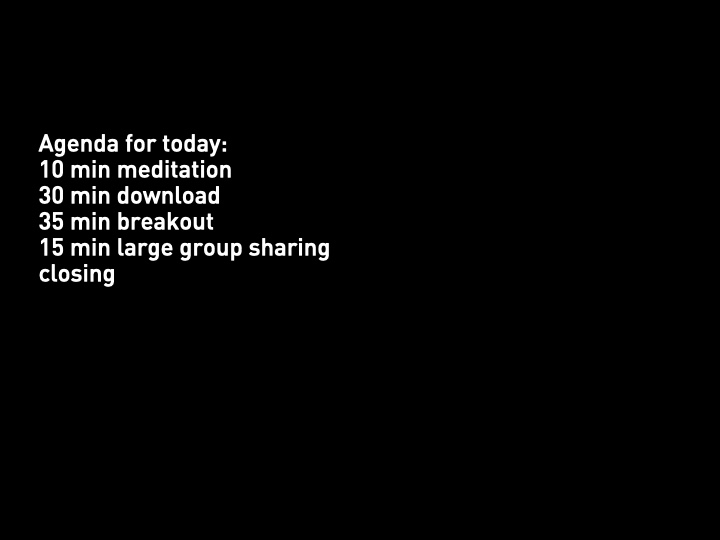
|
Today, we are going to cover a few topics, and this is the agenda. We will focus today primarily on the Four Noble Truths, and use that as a framework to be happy-er. :) We will first have a download of what the Buddha actually said about the Four Noble Truths, and then use that to unpack his meaning, followed by breakout sessions to discuss how to apply this in our daily lives. # |

|
But before we go into the Four Truths, I just want to make a small digression. # |
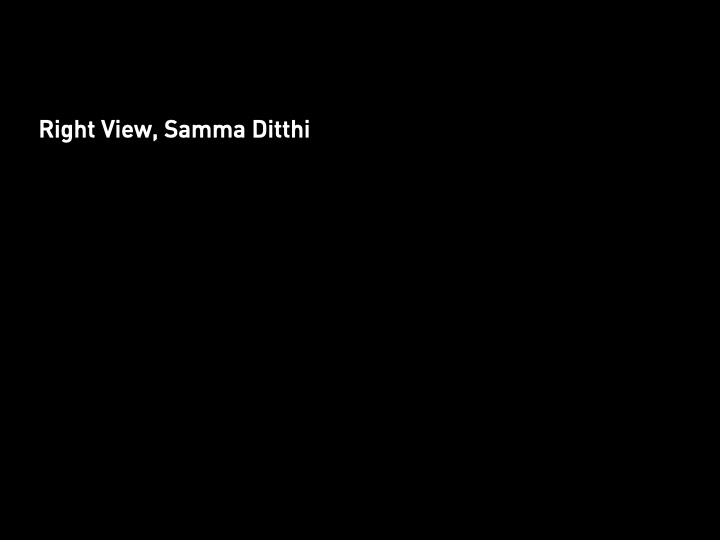
|
In the Buddhist tradition, we often use the term “View”. The first factor of the Eightfold Path is called Right View, or Samma Ditthi. And the Buddha has said before that with Right View, then the Right Intention/Motivation arises. He also said that # |
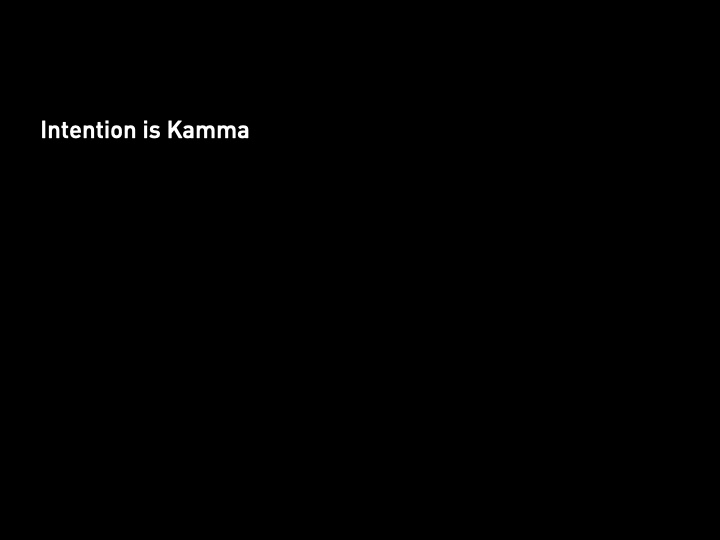
|
… Intention is Kamma. Because of your intention/motivation, you then act by body, speech and mind. # |
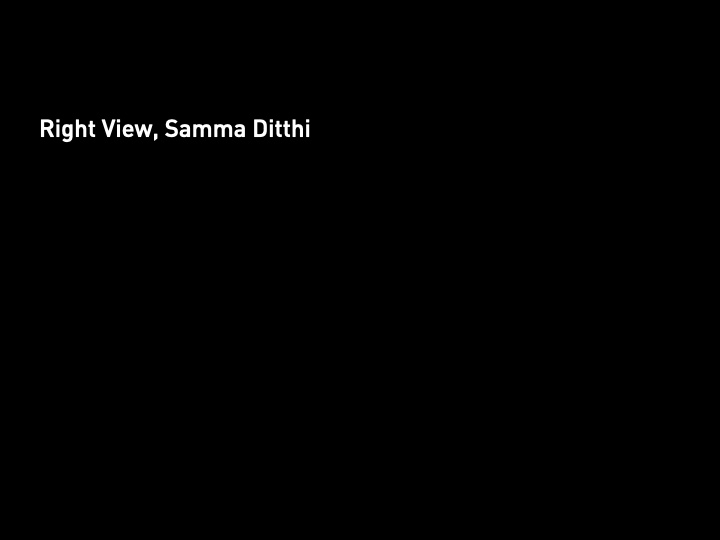
|
… so because of this, Right View is so so SO important… because without Right View, it is impossible for you to have the Right Intentions when you act by body, speech and mind. # |

|
… so actually, in modern lingo, Right View is actually Right Frame: it isn’t about WHAT you see, but HOW you see it. # |

|
The Dhamma is basically a reframing exercise. # |

|
I came to that conclusion when I recently read this book by Scott Adams. The interesting thing about Adams is that he is a hypnotist by training, and his predictions (in general) have been quite spot on. I was so surprised to see that his thinking in this book is actually VERY aligned with how people like Ajahn Brahm see the world (as I understand it). # |

|
For example, most people will tell people what they did wrong, so that they can avoid mistakes next time. Adams emphasizes that one shouldn’t criticize people, but instead tell them what they did well so they are motivated to continue improving. Which is exactly what Ajahn Brahm does, all the time. # |
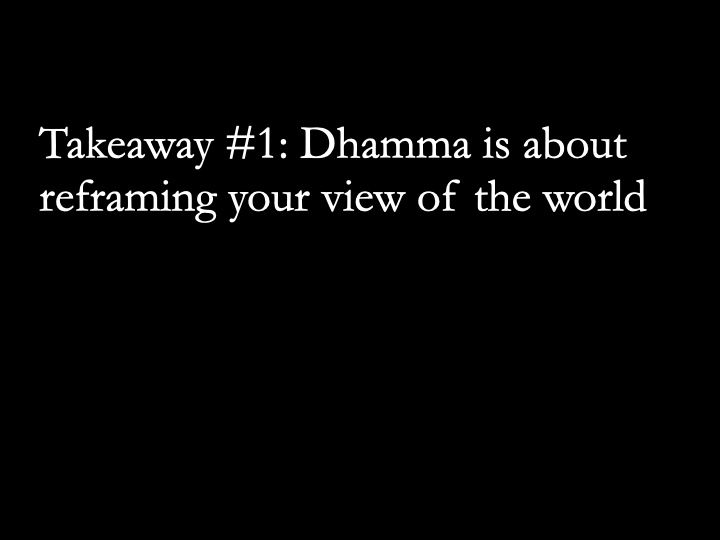
|
That is basically the Dhamma: it is taking what are conventional truths, and REFRAMING them, learning to think and view them in a different way. that’s the first takeaway for today. # |
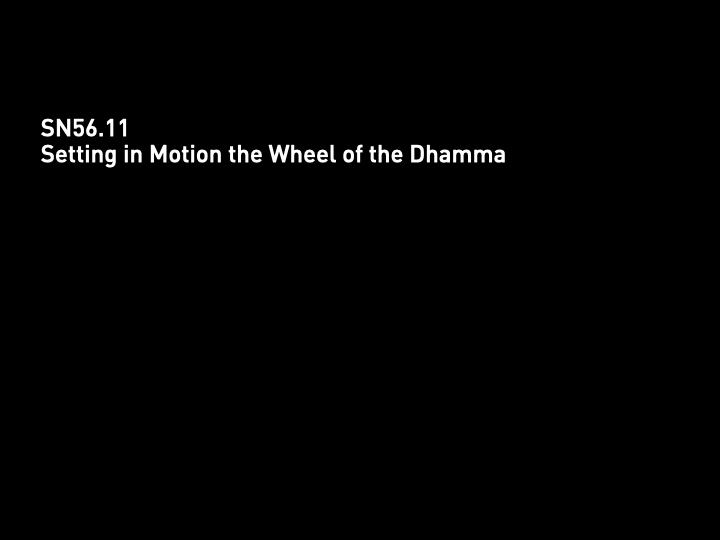
|
We will start first with the Buddha’s teaching at the Deer Park, in Sarnath, Isipatana, outside Baranasi (present day Varanasi). There, according to tradition, the Buddha taught the five first disciples the Four Noble Truths, in the Dhammacakkapavattanasutta: the turning of the Wheel of Dhamma. But I am going to change the order a little bit, so that it is easier to understand. # |
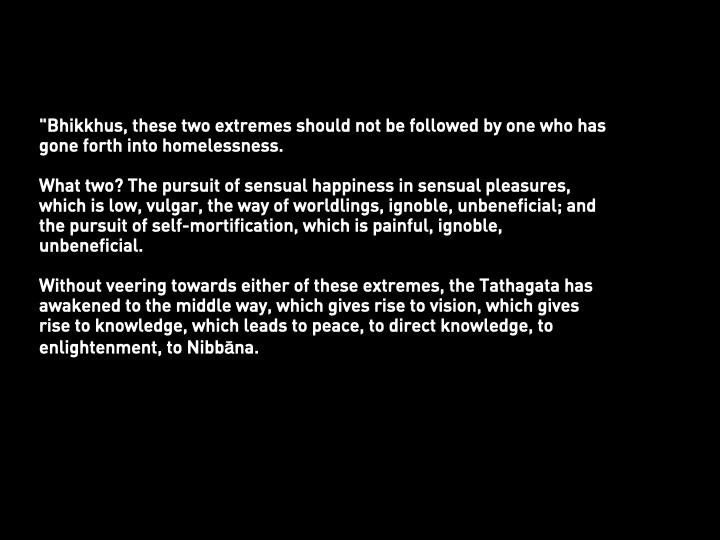
|
# |
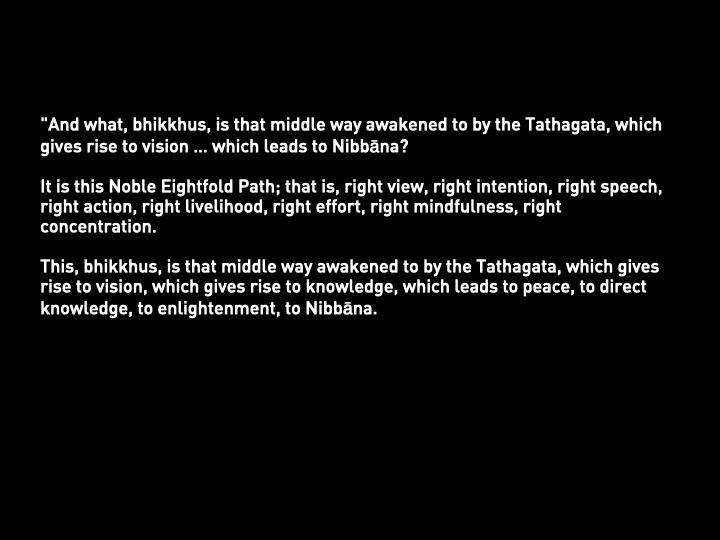
|
# |
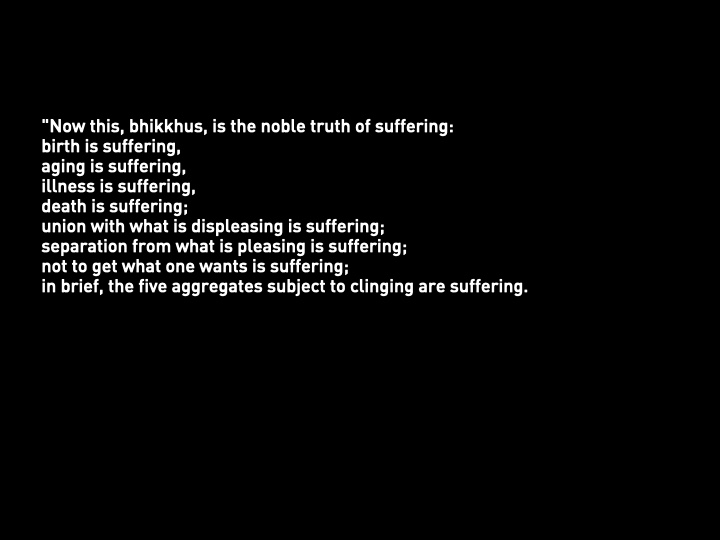
|
# |
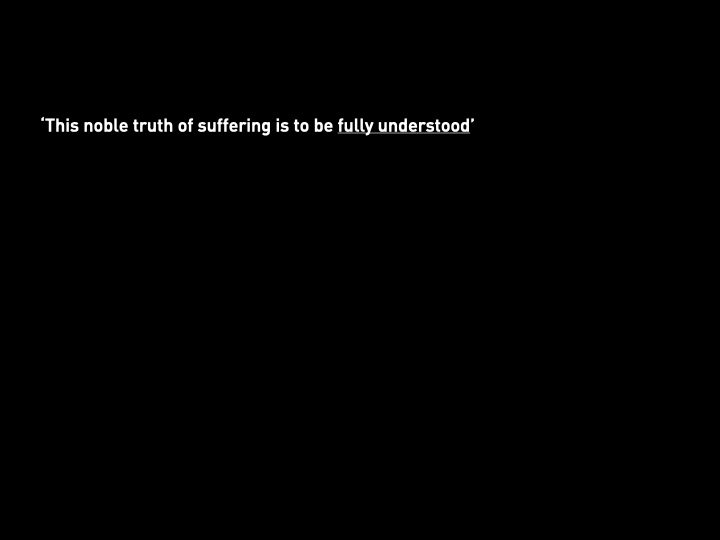
|
This is the job to be done (JTBD) of the first noble truth. It isn’t to run away, it isn’t to distract yourself with instagram: it is to fully understand your suffering. # |
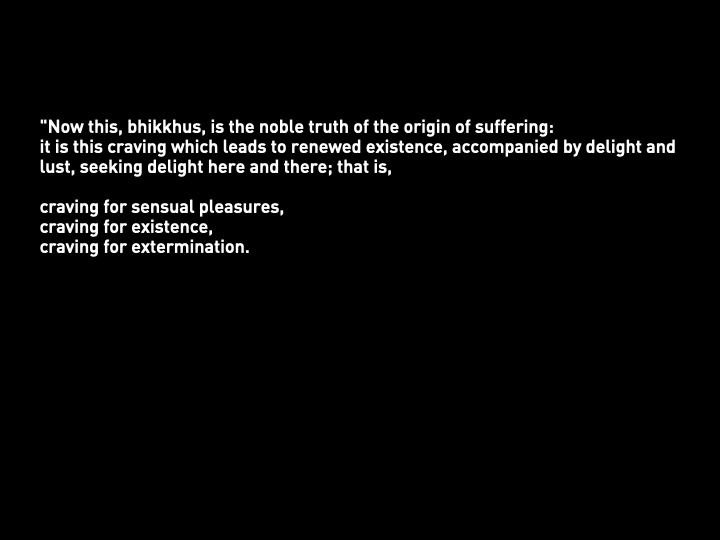
|
# |
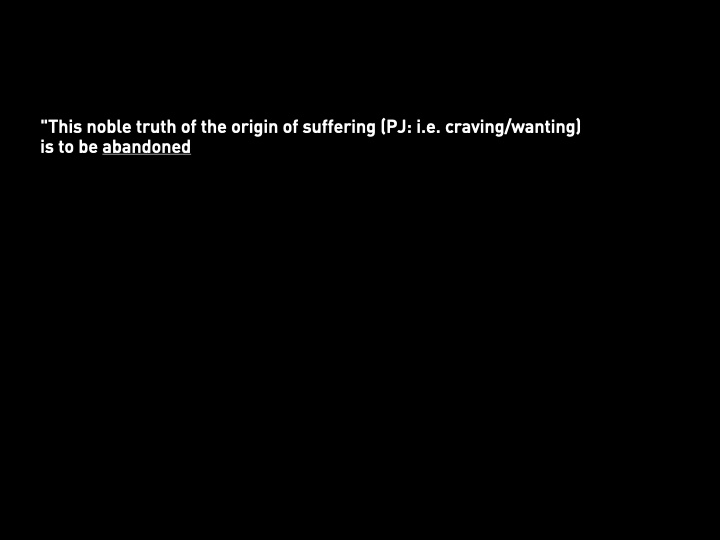
|
This is the JTBD of the 2nd Noble Truth: to abandon the craving, wanting. How do you do so? This can be found in the 3rd Noble Truth: # |
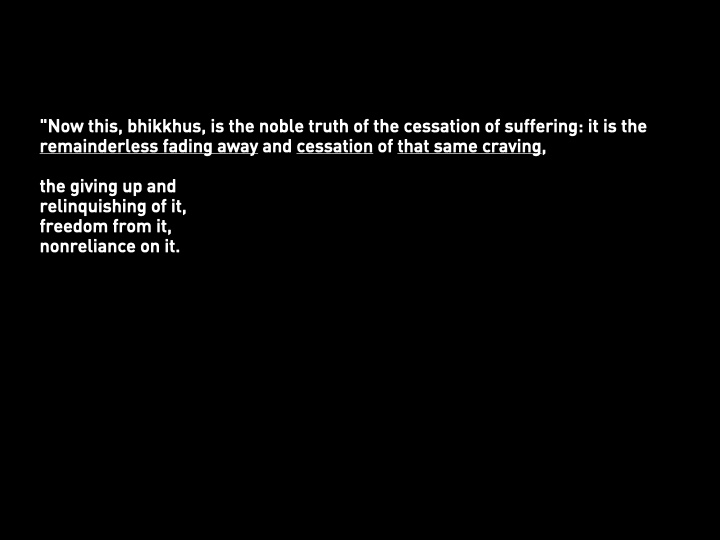
|
‘it is the remainderless fading away and cessation of that same craving, the giving up and relinquishing of it, freedom from it, nonreliance on it.’ The Four ways of letting go: giving (without expectation), throwing away, being free from it, and not letting it stick to your mind. # |
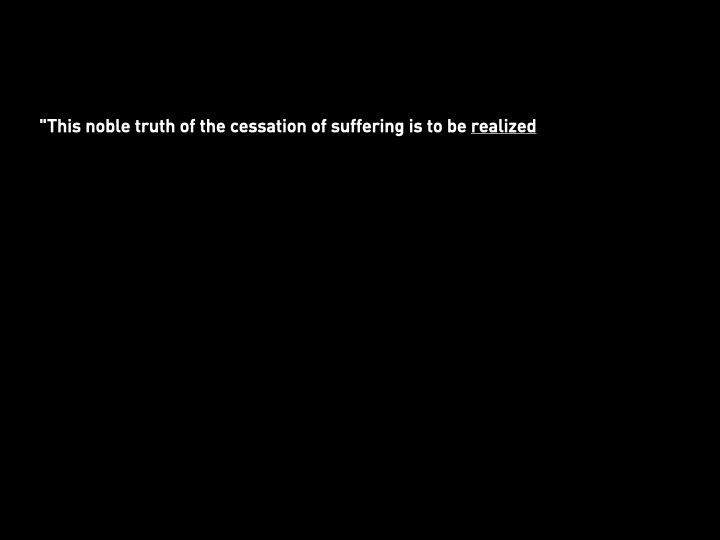
|
The JTBD of this 3rd Noble Truth is to be realized. # |
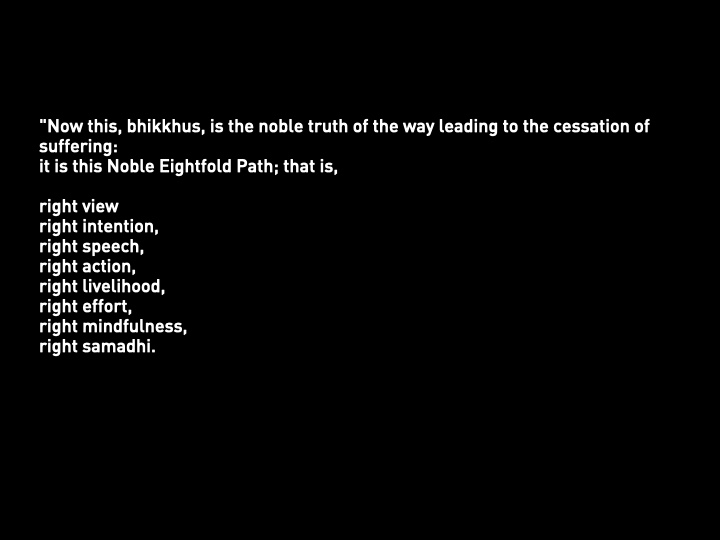
|
# |
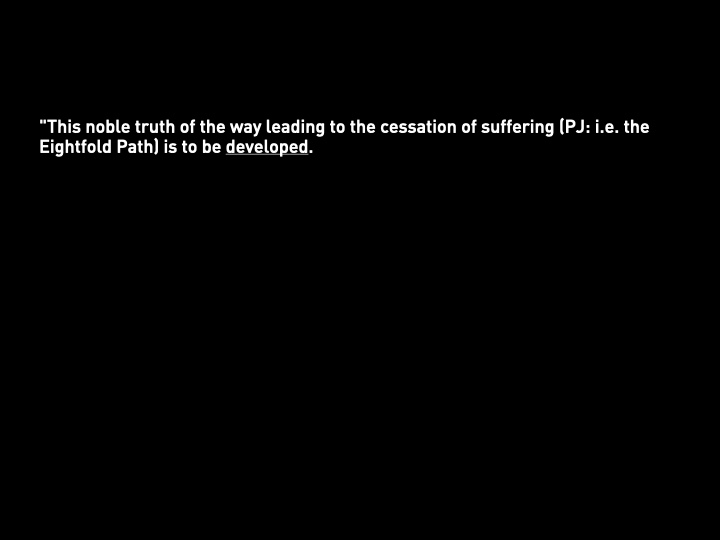
|
The JTBD of the 4th Noble Truth is to be developed. I am going to pause here. What is super amazing is that, the Buddha laid out a framework for complete happiness. What do I mean? # |
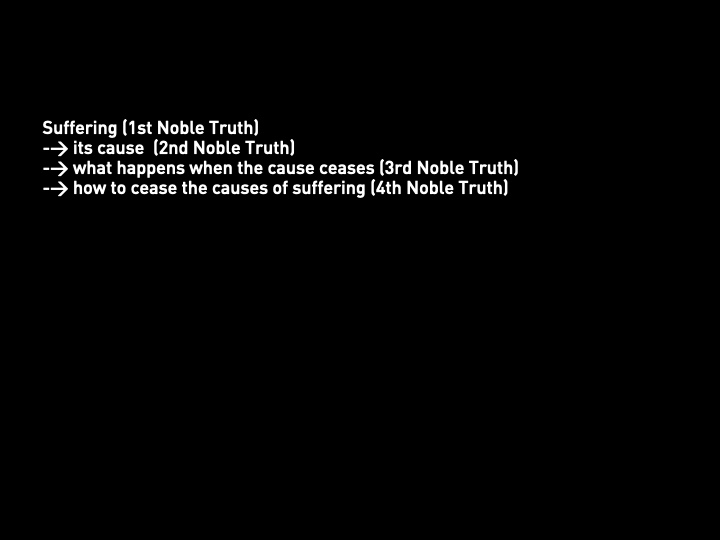
|
Most people look at the Four Truths, and they think “the Buddha only taught suffering and its elimination”. They don’t realize that the 3rd Noble Truth is about HAPPINESS. Imagine never being sad, never being frustrated, never being angry, never feeling fearful, abandoned, lonely, unsupported. What’s left isn’t an empty void: what’s left is immense bliss and happiness. So the Four Noble Truths really are, in a rearranged form, # |
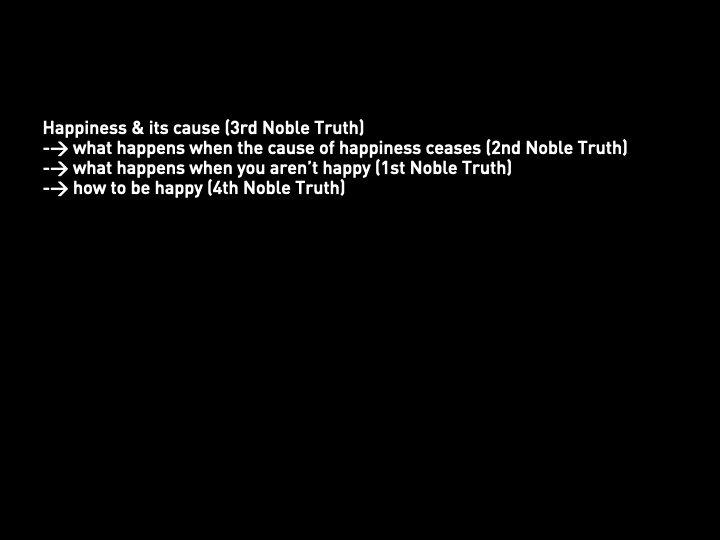
|
Most people look at the Four Truths, and they think “the Buddha only taught suffering and its elimination”. They don’t realize that the 3rd Noble Truth is about HAPPINESS. Imagine never being sad, never being frustrated, never being angry, never feeling fearful, abandoned, lonely, unsupported. What’s left isn’t an empty void: what’s left is immense bliss and happiness. So the Four Noble Truths really are, in a rearranged form, # |
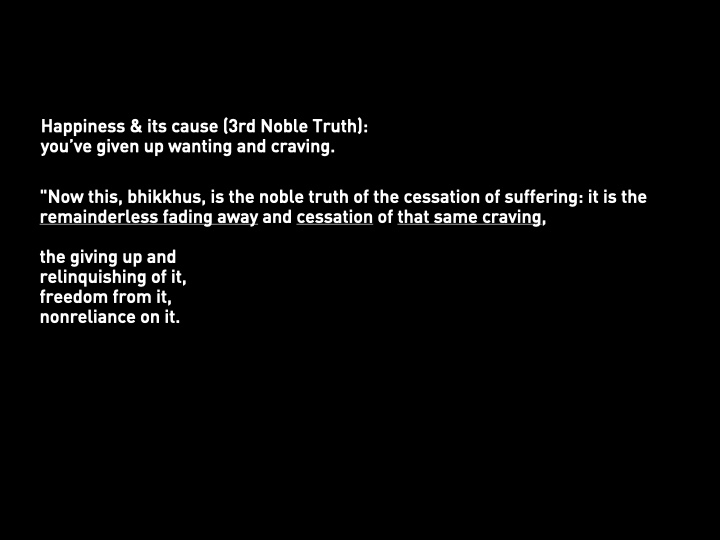
|
… about happiness. Happiness is possible, when you have destroyed the causes for suffering # |

|
… because we crave and want. # |
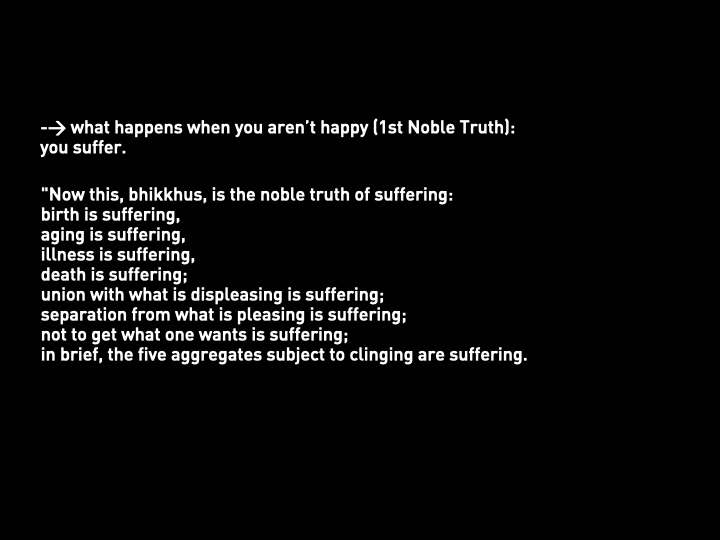
|
… but sometimes, we are unhappy, we suffer… # |
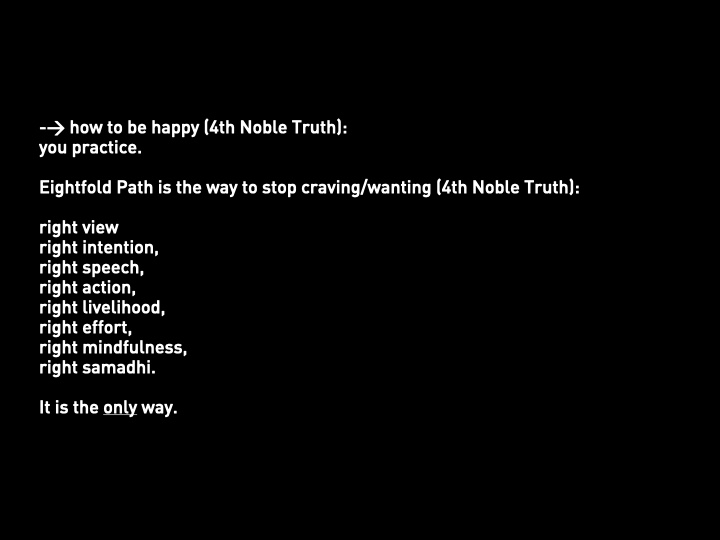
|
… and the way to stop our craving and wanting is to develop the Eightfold Path. # |
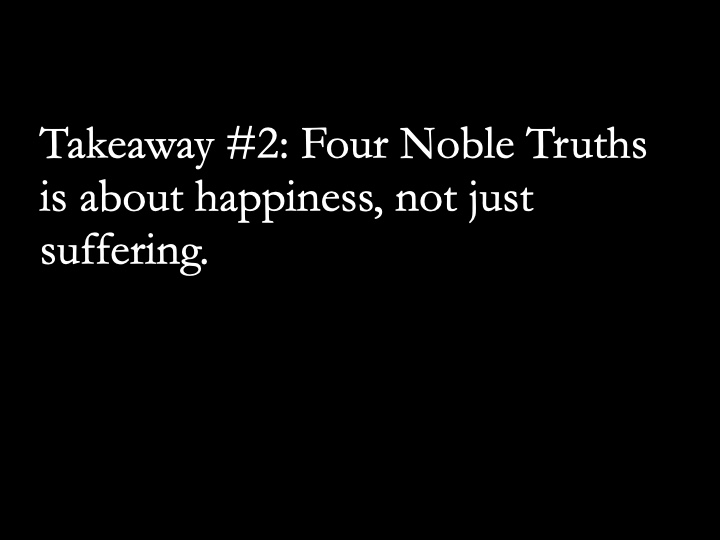
|
So that is the first Reframe for today. To highlight that the Four Noble Truths is really about ultimate happiness, not just about meh suffering. # |

|
The next reframe about this is that, embedded within the Four Noble Truths are its own recursive means to do its own job-to-be-done. What do I mean? I mean that you can use the Four Noble Truths itself to fulfil its JTBDs! # |
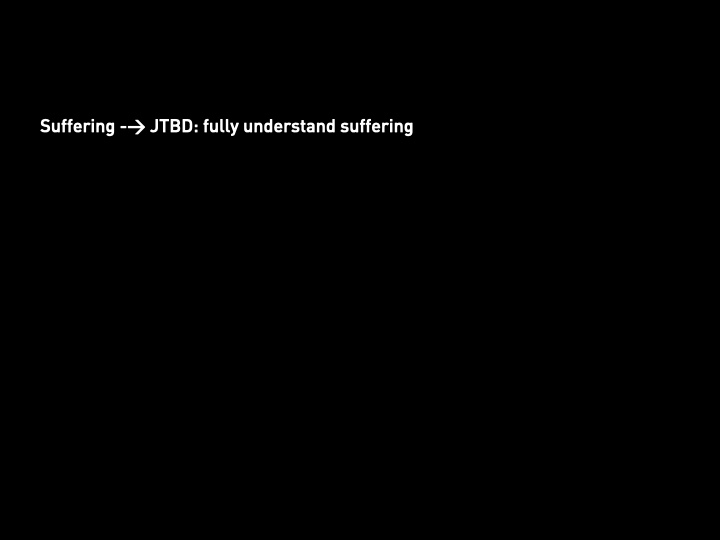
|
Example, suppose I am really suffering because I wanted a job which I didn’t get in the end. I am crying, really sad, and distraught. I want to just distract myself to no end, or go do something else! But I am supposed to “fully understand suffering”… how do I do so? # |
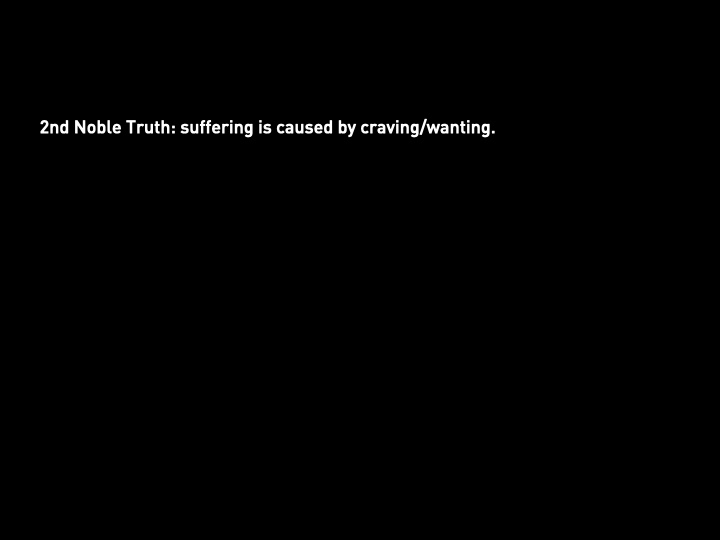
|
By applying the 2nd Noble Truth, I can see that ok, suffering exists, which means craving/wanting is the root cause of my suffering. # |
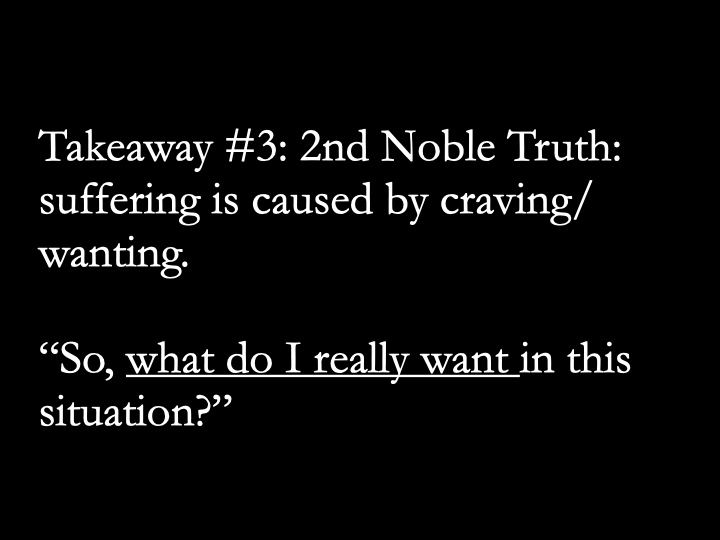
|
So I can THEN ask myself a prompt: “What do I really want here?” Because that wanting/craving is what is causing me to suffer. At this point, it is important to note that you probably shouldn’t immediately accept the first answer that comes to your mind. instead, you should give your mind some time to sit in stillness, or for you to do something else, and let the answer bubble up by itself. # |
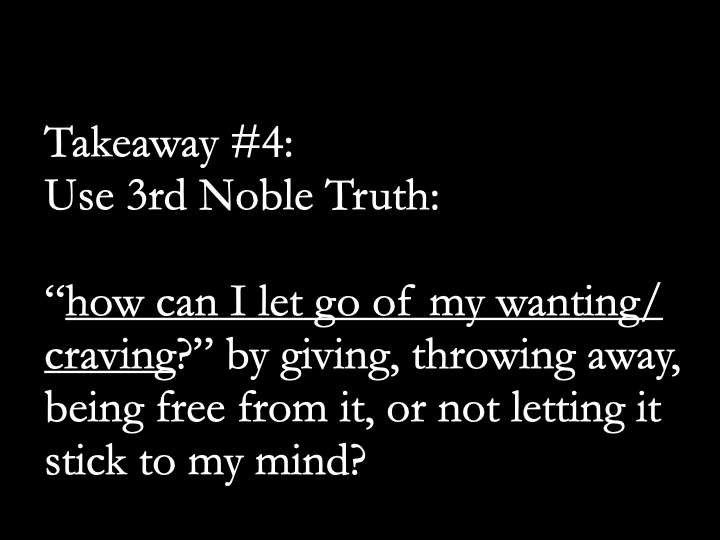
|
After you identify what is it you really want, you’re then in a better position to actually let go, using the Four Ways of Letting Go in the 3rd Noble Truth to let go of what it is that you want. # |

|
So those 3 of the 4 Noble Truths will help you with many, many, many of your personal problems. # |

|
Now, let’s breakout into groups of 4-5 persons, randomly assigned. Each person # |
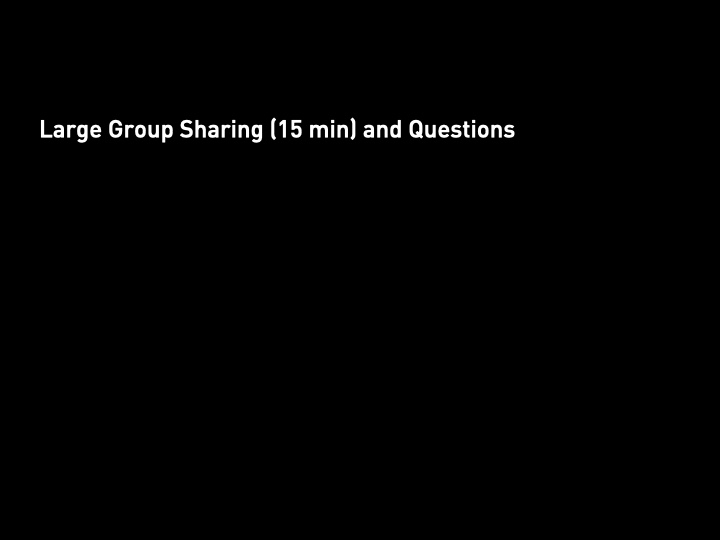
|
Now let’s hear from each group, maybe each group can take 2-3 mins to share what was discussed and shared in your respective groups? # |
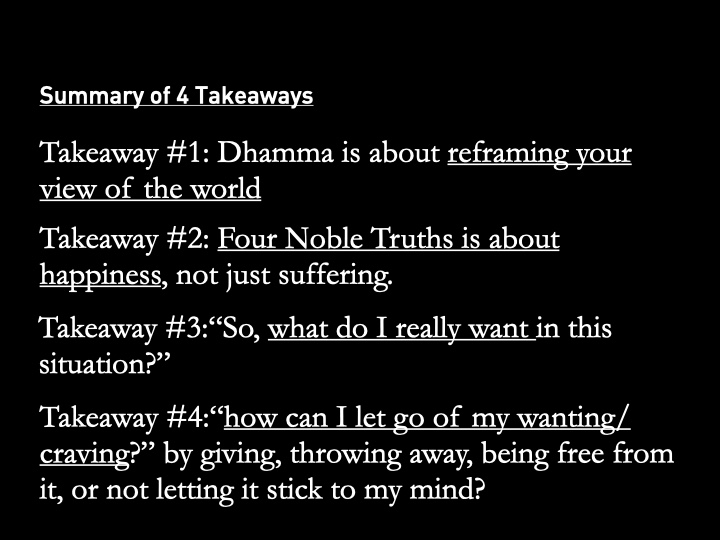
|
# |
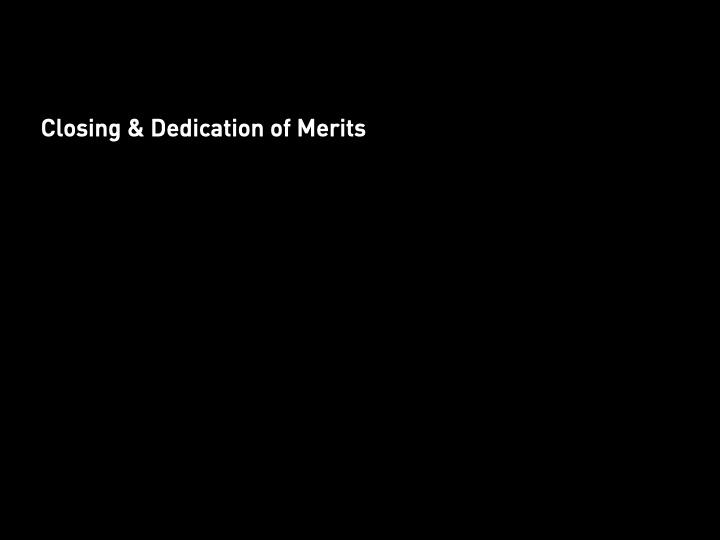
|
# |